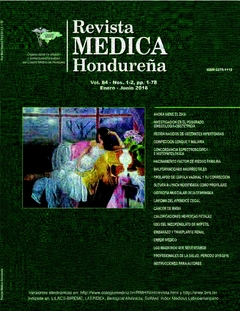Vaginal vault prolapse and correction. Case report and review of literature
Keywords:
Pelvic organ prolapse, hysterectomy, pelvic floor abnormalitiesAbstract
Introduction. The vaginal vault prolapse is a common complication after vaginal hysterectomy with a negative impact on the quality of life of women and is considered a common condition that reaches 40 % in multiparous women. It´s associated with urinary, anorectal and sexual dysfunction. A clear understanding of the support mechanism of the uterus and the vagina is important to make the right decision about corrective procedure. The most important risk factor usually is preexisting pelvic floor abnormalities before hysterectomy. Case report: We present the case of a 60 year old woman, who consulted for having a mass protruding vagina with 30 years of evolution, which has gradually increased in size, with antecedents of hysterectomy 12 years ago and also, repair of vault vaginal prolapse 10 years ago. Gynecological examination showed descent of the anterior vaginal wall up to 4 cm outside the vaginal opening. Another finding was a rectal prolapse on the back wall of the vagina. The patient underwent a repair of vault vaginal prolapse, with successful resolution of the problem. Discussion: The risk of genital prolapse increases with the number of parity and advanced age. The surgery to correct such defects of pelvic organ support has been identified as a risk factor for the development for this pathology. Management should be individualized, taking into account the experience of the surgeon, patient age, comorbidities, previous surgery and their sex life. Conclusion: There is no consensus on the mechanism of vaginal vault prolapse, but it is accepted by all the need to properly evaluate these patients and agree on the type of surgery that will be suitable for every circumstance.
Downloads
824




